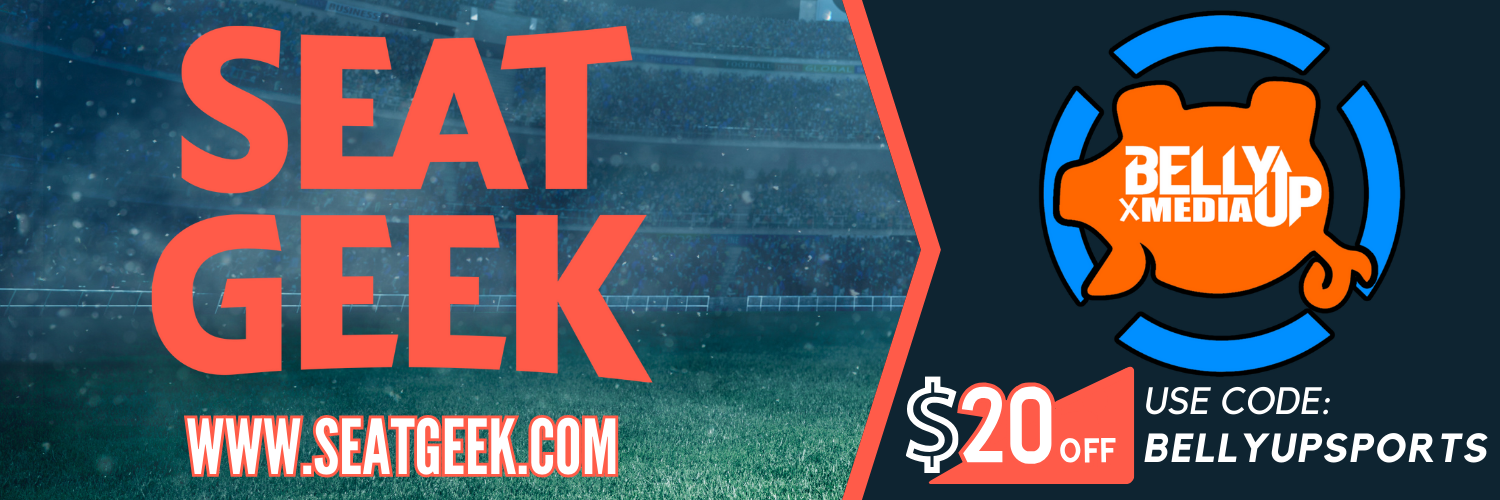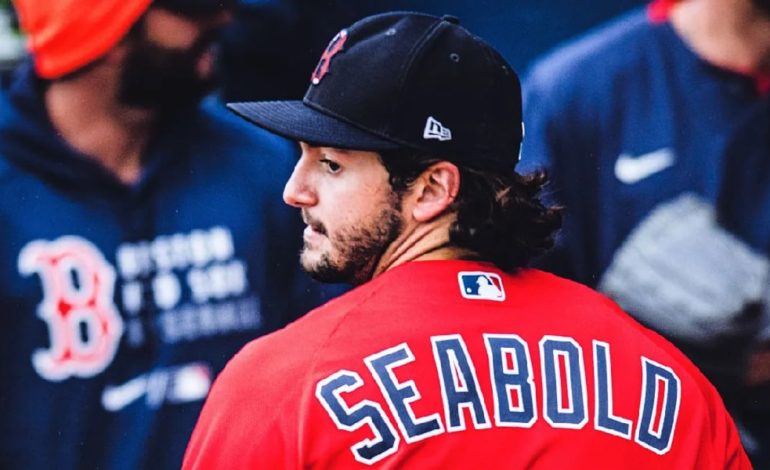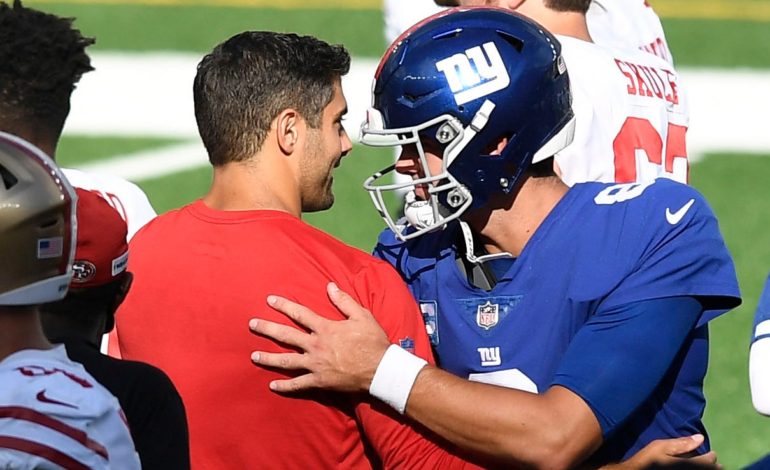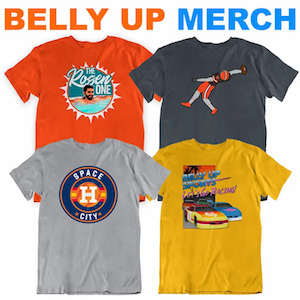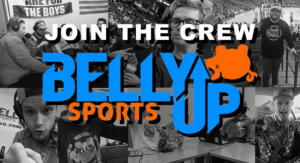The Las Vegas Summer League has been one of the most booming attractions in the NBA. Each summer, NBA teams send their young and prospective players to Las Vegas, amongst other cities, to get some organized basketball on film. While fans don’t get to see the workouts in between game days, it also gives the fans at home a look into who is coming up. And for the Houston Rockets, who is “coming up” continues to be the story of the rebuild.
Houston drafted Jabari Smith Jr., Tari Eason, and Tyty Washington Jr. in the 2022 NBA draft. They, along with a pair of 2021 rookies, and a few undrafted prospects donned the Houston Rockets red and white in Vegas.
It’s worth noting that much of Houston’s promise leans on young players not at Summer League. Kenyon Martin Jr., Jalen Green, Alperen Sengun, and Kevin Porter Jr. are all younger than multiple people on the Rockets Summer League roster, figure to be big parts of the club’s future, and watched in street clothes as their teammates and friends competed. Josh Christopher and Daishen Nix, guys who saw NBA action as rookies last year, played the “veteran” roles on the floor in Las Vegas.
Head Coach Stephen Silas and GM Rafael Stone both mentioned how nearly everyone in the organization, on both the NBA and Summer league rosters, was in Las Vegas working out together. The camaraderie on a roster of guys nearly entirely in their early 20’s appears to be building… because, frankly, how could a week in Vegas hurt it?
As for the new faces, let’s look at how they did ok the floor.
Jabari Smith Jr.
No one on the Houston Rockets had more pressure on them at the Las Vegas Summer League than Jabari Smith Jr. Smith Jr. was the number three overall pick, but up until roughly 72 hours before the NBA Draft, it felt certain he would go number one overall. The six-ten forward boasts a seven-foot-one wingspan, a 220 lbs. frame that has room to fill out, and shot an impressive 42-percent from beyond the arc.
Defensively, Jabari Smith Jr. was the best player in Las Vegas. He took on every assignment, fellow top four picks Chet Holmgren, Keegan Murray, Paolo Banchero, and former NCAA Player of the year Luka Garza, in stride. He cut off driving lanes, forced difficult stepbacks, and got his man to give up the ball or take a difficult shot. In each game, Smith Jr. had at least one jaw-dropping block. He slid his arm under the rim to block Holmgren’s reverse layup, spiked Greg Brown III’s lay-up at the front of the rim, sent Blake Wesley’s finger roll into the third row, and palmed Jeriah Horne’s dunk attempt.
Offensively, Smith Jr. looked a lot more like the kid who just turned 19 in May. Smith Jr. averaged 14.4 points and 9.4 rebounds per game in just under 30 minutes per contest. What may have alarmed fans of the Houston Rockets was watching Smith Jr. struggle shooting the ball. Smith Jr. shot 1/4, 2/9, 3/5, 0/5, and 1/4 across the Houston Rockets’ five games. That’s a far cry from the sharp-shooter Houston drafted. 7/27 is just 26-percent, just over half as well as Smith Jr. shot in college.
But even in Summer League, where offenses are largely based on isolation and individual creation, Smith Jr. took good shots. With scheming, offensive sets, and guards sharing the ball it stands to reason those good shots become great ones, and great ones begin to fall more regularly.
That Smith Jr. had a continuous offensive impact, even without shooting as well as he can, is important. Defenses still treated him as the reputation shooter he is, which led to guys like Tari Eason, Josh Christopher, and others getting to the basket with more space. With that kind of spacing, the guards like Jalen Green and Kevin Porter Jr. will live at the rim more than they did in the final months of last season.
Projection: Defensive Anchor
Jabari Smith Jr., on day one, will be the best defensive player on the Houston Rockets. He guards multiple, if not all, positions on the floor. He quickly gets from helpside to the front of the rim, he squeezes over screens and doesn’t need switches, and he proved he can get from a short drop to the ball-handlers level before they can gather to shoot.
Offensively, Smith Jr. is going to continue to benefit from the creation of the other Houston Rockets. As he gets more comfortable shooting against NBA defenses, the mutually beneficial relationship with Houston’s guards will build dividends.
Smith Jr.’s next step offensively will be to have a creative counter off of his straight line drive. His jump shot, even on reputation, has defenders flying out to cover him. He consistently can beat the first defender to a spot for a midrange pull-up before he gets to the next defender, but he’ll make his life easier if he has a move to put on the waiting help-side defender.
Smith Jr. showed this briefly, in two separate plays against portland. He was able to size up the defender, put the ball between his legs, and lead with his shoulder on the way to a right-hand finish in the first half. In the second half, after attacking a dribble-handoff with his left, Smith Jr. spun back around to a right-handed finger roll. Smith Jr. can do these kinds of things against help defenders because he’s shown these flashes and if Houston can get him to also be that type of threat their offense will unlock an entirely new level.
Tari Eason
If there was a “brightest spot” in the Las Vegas Summer League for the Houston Rockets, it was 17th overall pick Tari Eason. Eason, the SEC’s 6th Man of the Year and first-team all-conference, was the NCAA’s best energy guy off the bench. His performance as a starter in Las Vegas had many wondering how he fell to pick 17 as well as how he didn’t start at LSU.
As LSU assistant coach Bill Armstrong told The Athletic, “Tari was by far our best player, but the way it worked out, and the way it’s always worked for us from Day 1, is when we recruited those five-star kids, we just basically promised them that they would start. And we started all our five-star guys so the next one we were recruiting, we could say, ‘Hey, look, we’re not just telling you that; here’s all of the five-stars who started every game.’ It really helped us in recruiting to be able to show that, because that’s what those kids want to know and hear.”
That same selflessness was evident in the winning plays Eason made routinely at Las Vegas Summer League. Eason found his way to easy putbacks on offense, dove out of bounds to save loose balls that started the fast break, punched lobs from his teammates, and protected the rim as he and Smith Jr. alternated back and forth along the backline. Eason even ended the Oklahoma City victory by yanking a 50/50 ball out of Aaron Wiggins‘s reach before flipping the ball to an open teammate.
What was illuminating about Tari Eason was his aggression in everything he does. Perhaps he just “got” Summer League, but even his 2/9 three-point shooting against Orlando to open the week didn’t deter him. If anything, it appeared that Eason didn’t care what his shooting stats were. When he was open, he shot it. If the defense closed out, he attacked. Eason’s motor never slowed down, let alone stopped. Of players who played in four or more games in Las Vegas, Eason finished top 10 in points per game without having many, if any, sets for him.
That type of player will fit in beautifully in Houston, where he will compete with Jae’Sean Tate, and KJ Martin for the scrappy, hustle plays.
Projection: Rotational Player
That said, after a great performance in Summer League, there will be pressure to fit Eason into the rotation, if not eventually the starting lineup, very quickly. Eason’s resemblance to an Energizer bunny makes him easy to root for. But Eason has plenty of polishing to do in his game. As seen most vividly against Greg Brown III and Portland, contested layups are not a guarantee for Eason. Further, if his straight line attack gets cut off, he can struggle with countermoves besides his lift over Eurostep.
Defensively? Eason is at least a rotational player on the Houston Rockets. And his ability to impact the offense without a lot of intentional touches helps the team, too. But at the NBA level, as opposed to Summer League, there are a few holes in his game that high-level competition may take advantage of. For instance, if he’s on a 2/9 shooting from deep type of day, an NBA team is going to cover him with their rim protector, in a permanent drop, and deter Jalen Green or Kevin Porter Jr. from getting to the cup. Further, his shooting motion is clean but begins low. As he continues to improve, that will need to get faster as well.
Can his change of pace spark the Rockets? Absolutely. Will his impact be most noticeable on nights he’s “feeling it” offensively? Tenfold. But as far as him fit in the rotation, Houston will need to continue to work on his skill set as the young rookie build his way into a consistent impactful player. If he’s there by November? He becomes the steal of the 2022 NBA Draft, and Martin, Tate, and the other forwards in rotation may see their minutes shrink.
Tyty Washington Jr.
Where Houston sent very few forwards and centers to Las Vegas for Summer League, the guard room was crowded. Tyty Washington fought with Daishen Nix, Josh Christopher, Trevor Hudgins, Trhae Mitchell, Eron Gordon, and Tamenang Choh. Nix and Christopher played in nearly 100 NBA games combined last season, and are both competing for the “Sixth Man” position in the rotation this season. Washington, the 29th overall pick, had a much steeper hill to climb to get on the floor.
For a quick indicator of how that went for Washington Jr.? Washington Jr. had 28, 22, 24, 29, and 31 minutes. By the third game, he had forced his way into the starting lineup over forward Anthony Lamb. Washington was so valuable to the Rockets offense that Summer League coach Rick Higgins made the decision to play with three small guards for the bulk of the game.
What Tyty Washington Jr. brought to the floor was interesting in how it separated from his college tape. At Kentucky, playing in the backcourt with Sahvir Wheeler (and hoping to play with Shaedon Sharpe), Washington Jr. was a scorer. The six-three Arizona native was quick to dish out double-digit assists, and broke John Wall’s record, but Kentucky needed him to score while Wheeler led the SEC in assists.
When Washington showed up with a pro-ready floater, it was expected. When he shot over 33-percent from three in three of five games, it was predictable. But when, amongst guards with NBA experience, Washington Jr. became the catalyst to run the offense? The Houston Rockets knew they’d drafted the right guy.
What was most impressive about Washington Jr., and was evident in the Portland game, was his ability to feel space in the future tense. Washington Jr. has a very mature understanding of what the defense’s reactions will be before he makes his move. Thus, when he drives to the nail, he knows the off-wing defender will be stuck in no-man’s land. When he attacks a rim protector, he understands where the defender’s hands will go, and thus where the passing lane will be. That feel for space proved vital in getting his own floater off, but it also allowed Washington to control the pace of the game like a natural point guard.
In the San Antonio game, Washington Jr.’s feel for the game was obvious as he drove to the basket over and over. Washington took smart shots, found Smith Jr. and Eason when he needed to, and helped mount the comeback win.
Defensively, Tyty Washington Jr.’s size and age were clear factors. He doesn’t have the sturdy base that Nix or Christopher has, and thus he typically drew the smallest match-up. Washington is quick enough to grow as an NBA defender, but at six-three he may be a liability on certain switches. With what Smith Jr. adds to defensive switchability, Washington may detract.
Projection: Fan Favorite Fighting for time
To start the season, Houston will field Kevin Porter Jr., Jalen Green, Eric Gordon, Josh Christopher, Daishen Nix, Garrison Mathews, KJ Martin, Jae’Sean Tate, David Nwaba, Marquese Chriss, Trey Burke, and Tyty Washington across their three-guard lineups. Some of those guys are further down than the “end of the bench,” and may get waived. Others may just stay in warm-ups all season long. Washington isn’t quite a starter, but he’s also clearly a better option than some of the ones the Houston Rockets have.
What will likely happen is Washington will spend time in the G League and come off of the bench, much like Christopher did a season ago. Washington will see real development in leading the Vipers while sparking the “why doesn’t he play more?!” questions while he’s in Houston.
Rafael Stone understands the backlog. As he said at the Summer League, Houston has more players than roster spots. So this shouldn’t be seen as a knock on Washington Jr… but as an opportunity to get a lot more game minutes than the average rookie off of the bench.
When he’s on the floor for the Rockets, he should be getting a lot of run as the distributor and point guard. As his feel for the game begins to match the speed of the NBA game, he’s likely to near 10 assists multiple times, for the Rockets, before the season is over. He’ll be on the floor with the likes of Green, Smith Jr., and other key scorers and shooters.
Defensively we will really get to see what Washington Jr. is made of in his G League time. His growth will be most obvious there, where his size doesn’t work to his detriment in the same degree.
Here’s one thing that will clearly happen to Washington Jr.: after two or three big games in the NBA, folks are going to argue he should start. Kevin Porter Jr. is a scoring point guard, and Jalen Green is a creative two-guard. But there will be times that the pass-first mentality Washington Jr. showed in the Summer League will be exactly what Houston needs. Further, as a competitor, he’s going to really fight in every minute he’s on the floor. Fans will want more Washington Jr. than they get in 2022-23, and that’s a good thing. Having options means Houston can try multiple things.
But it also means minutes will feel short.
Other Notables:
- Aric Holman’s energy has to at least be rewarded with a year on the Rio Grande Valley Vipers. Holman attacked the rim, held down the glass, and showed glimpses of shooting touch from deep. He may be a project, but he demonstrated the intangibles that warrant more time in the organization.
- Trevor Hudgins should start games for the Vipers. Hudgins is small, and sneakily older than many rookies… but the undrafted Division II player of the year can flat play. He signed a two-way contract, much of which will likely be spent in Rio Grande Valley. But while he’s down there, unless someone off of the NBA roster is working on something specific, he needs to be running the show. In three years, the then-26-year-old Hudgins may be a spark plug off of the bench in a key stretch of the long arduous season. That stretch can be the difference in a three-seed and home court advantage throughout the playoffs, or being stuck in the play-in vs. hosting the first round.
- The Anthony Lamb experiment needs to end. At 24 years old, and entering his third season in pro basketball, Lamb has done a lot of work to change his body. He’s worked incredibly hard to get to this point, but he’s still not Las Vegas Summer League starter quality. Houston has a ton of potential within the organization but it will need to eventually cut ties with some guys, and Lamb is one of those guys. He has trouble creating separation offensively, can’t quite shoot consistently to pull the defense out of help, and even in his remade body he’s a half a step slow in summer league defense. All of that is without even diving into his troubling past… though that does make this even less difficult.
- Usman Garuba was sorely missed… which seems to be the story of his 12 months in the organization. All film on Garuba from his pre-NBA play indicates he will be a defensive stud that has an immediate impact. But until he gets consistent run, it will be hard to see that. The Houston Rockets need to make his minutes, likely as a backup center, a priority just to get a true evaluation of the talent they have.
- They didn’t go a perfect 5-0, but coach Rick Higgins was a perfect man for this job. He balanced minutes in a way that felt appropriately constructive and competitive. Higgins clearly got into Jabari Smith Jr.’s ear after game one, and he was far more aggressive as the games continued. He made adjustments to the starting lineups to reward guys for their play. His After Time Out plays (ATO’s) we’re beautiful, most notably the one Houston ran before halftime of the Portland game (in which Tari season smoked a layup at the buzzer… but was wide open). Higgins was fantastic in interviews, and he clearly just “gets it.” We love him in Houston, but don’t be surprised if he’s getting a G League team or young NBA team to himself.
For more on sports, sneakers, and fandom, follow me@painsworth512 for more. Give our podcast“F” In Sports a listen wherever you listen to podcasts!

